#WASP-39b
Explore tagged Tumblr posts
Text
10 of the Weirdest Exoplanets Discovered So Far
The cosmos is vast and mysterious, with billions of stars, each potentially hosting planets of its own. As our technology advances, we’ve been able to detect and study exoplanets—planets outside our solar system—with increasing precision. Here, we’ll delve into ten of the most bizarre exoplanets discovered up to 2022, presenting them with analogies to help you grasp their peculiarities. J1407b:…

View On WordPress
#55 Cancri e#celestial mysteries#cosmic wonders#diamond planet#exoplanets#gas giants#GJ 1214b#Gliese 436 b#HD 189733b#J1407b#Kepler-10c#planetary discoveries#PSR J1719-1438 b#space exploration#TrES-2b#WASP-12b#WASP-39b#water world#weirdest exoplanets
2 notes
·
View notes
Text
Cálculos de un nuevo modelo muestran el impacto del brillo y la actividad magnética de las estrellas
En la constelación de Virgo, a 700 años luz de la Tierra, el planeta WASP-39b orbita alrededor de la estrella WASP-39. El gigante gaseoso, que tarda poco más de cuatro días en completar una órbita, es uno de los exoplanetas mejor estudiados. Poco después de su puesta en servicio en julio de 2022, el telescopio espacial James Webb de la NASA dirigió su mirada de alta precisión hacia el lejano…
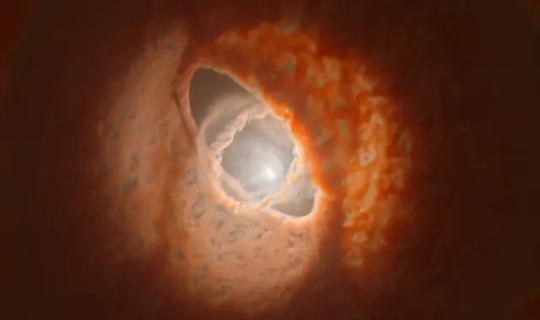
View On WordPress
0 notes
Video
youtube
Liked on YouTube: The Craziest Discoveries The James Webb Space Telescope Has Made So Far || https://www.youtube.com/watch?v=A3KkalH4d-I || Compare news coverage. Spot media bias. Avoid algorithms. Try Ground News today and get 30% off your subscription by going to https://ift.tt/ZqFoU3e. Sale ends July 17. One year ago, in July 2022, we got first light from the James Webb Space Telescope. After over 20 years of planning and delays, the most powerful telescope of all time officially went into operation. Now, one year later, let’s take a look at Webb’s groundbreaking first year in operation - the questions answered, the answers questioned, and where it all goes next. Want to support the channel? Here's how: Patreon: https://ift.tt/IOXjBnz Channel Memberships: https://www.youtube.com/channel/UC-2YHgc363EdcusLIBbgxzg/join T-Shirts & Merch: https://ift.tt/gWnSCKB Check out my 2nd channel, Joe Scott TMI: https://www.youtube.com/channel/UCqi721JsXlf0wq3Z_cNA_Ew And my podcast channel, Conversations With Joe: https://www.youtube.com/channel/UCJzc7TiJ2nnuyJkUpOZ8RKA You can listen to my podcast, Conversations With Joe on Spotify, Apple Podcasts, Google Podcasts, or wherever you get your podcasts. Spotify 👉 https://ift.tt/92zrSQA Apple Podcasts 👉 https://ift.tt/Xe930i4 Google Podcasts 👉 https://bit.ly/3qZCo1V Interested in getting a Tesla or going solar? Use my referral link and get discounts and perks: https://ts.la/joe74700 Follow me at all my places! Instagram: https://ift.tt/T5w0ihG TikTok: https://ift.tt/sWx5flF Facebook: https://ift.tt/wQTp03O Twitter: https://www.twitter.com/answerswithjoe LINKS LINKS LINKS - https://ift.tt/B5UxA6K https://ift.tt/mc2lfat https://ift.tt/SxngRCh https://ift.tt/uUAPDIZ https://ift.tt/pumgYGX https://ift.tt/nSyCtza https://ift.tt/C1NOY4j https://ift.tt/lfM2k63 https://ift.tt/y749q0x https://ift.tt/rw0vsxg https://ift.tt/OV7bHls https://ift.tt/6BDLdcr]. https://ift.tt/EXfj0hB https://ift.tt/8bsPikG https://ift.tt/YbnOatU https://ift.tt/tQY3c9B https://ift.tt/biuKUzl https://ift.tt/UD0l9I6 https://ift.tt/9wFhnpW https://ift.tt/7zyH6go https://ift.tt/A4jHyMe https://ift.tt/lALnrWo https://ift.tt/AyE9LW3 https://ift.tt/fa4eWkE https://ift.tt/YhHJcZM https://ift.tt/M5g6KGC https://ift.tt/t4Pu0mq https://ift.tt/Qs8LvG3 https://ift.tt/xjTHG6k https://ift.tt/06JOYPA https://ift.tt/txDqgiU https://ift.tt/jBqI1KM https://ift.tt/ocw72RH TIMESTAMPS - 0:00 - First Light 1:37 - GLASS-z13 3:01 - Phantom Galaxy (M74) 3:49 - HIP 65426 b 5:00 - Brown Dwarf Clouds 5:57 - New Pillars of Creation 7:20 - CO2 on WASP-39b 8:26 - DART and Titan 9:20 - Uranus 10:55 - What's Next For Webb? 12:52 - Sponsor - Ground News
0 notes
Text
The NASA/ESA/CSA James Webb Space Telescope just scored another first: a molecular and chemical portrait of a distant world’s skies. While Webb and other space telescopes, including the NASA/ESA Hubble Space Telescope, have previously revealed isolated ingredients of this heated planet’s atmosphere, the new readings provide a full menu of atoms, molecules, and even signs of active chemistry and clouds. The latest data also give a hint of how these clouds might look up close: broken up rather than as a single, uniform blanket over the planet.
The exoplanet in question - WASP-39b - is a "hot Saturn", meaning it's about the size of Saturn in our own solar system but orbits very close to the parent star, WASP-39. In fact, the orbit is smaller than that of Mercury!
We have been waiting for a full analysis of the atmosphere of WASP-39b ever since it was previewed during the first image release of JWST's data back in July 2022. And this news, which came to me in the form of about 10 separate press releases involving five different papers, did not disappoint.
Webb’s exquisitely sensitive instruments have provided a profile of WASP-39 b’s atmospheric constituents and identified a plethora of contents, including water, sulfur dioxide, carbon monoxide, sodium, and potassium.
Look at that list! And that's just a few of the molecules identified. The sulfur dioxide alone is worth its weight in research gold since we've never found it in an exoplanet atmosphere. Here, it is produced by photochemical reactions, similar to how ozone is produced in Earth's atmosphere. Scientists are working on models of this process going forward.
These results are incredibly promising for future studies of other exoplanets, including those within the TRAPPIST-1 system. That particular system has small, rocky planets that exist in their star's habitable zone, where liquid water is possible. They're considered some of the best potentially habitable exoplanets found to date... and now we know we can get a glimpse of their atmospheres.
For all JWST drove the budgets of the astrophysics community to a halt and caused massive amounts of stress for everyone involved, our newest space telescope is already proving its worth.
63 notes
·
View notes
Text
Follow here and never miss another James Webb Telescope Discovery. Chronological List of All James Webb Space Telescope Discoveries since the release of first images in July, 2022
James Webb Telescope Discoveries in June 2023
06-06-2023 - Webb Telescope Detects Universe’s Most Distant Organic Molecules. Full article here
06-05-2023 - Webb Telescope's JADES Program Unearths Ancient Galaxies' Starry Spectacle. Full article here
06-02-2023 - James Webb Telescope Reveals the Hidden Beauty of NGC 5068's Star Formation. Full article here
James Webb Telescope Discoveries in May 2023
05-31-2023 - James Webb Telescope Detects Water Vapor on Ultra-Hot Exoplanet WASP-18 b. Full article here
05-30-2023 - James Webb Telescope Maps Surprisingly Large Plume Jetting From Saturn’s Moon Enceladus. Full article here
05-24-2023 - X-ray and Infrared Symphony of Chandra and Webb Unveiling the Secrets of Galaxies and Nebulae. Full article here
James Webb Telescope Discoveries in April 2023
04-24-2023 - James Webb Space Telescope Uncovers Epic Prequel to Enormous Galaxy Cluster. Full article here
04-17-2023 - James Webb Space Telescope Captures Stunning Image of Arp 220. Full article here
04-07-2023 - Webb Telescope reveals Mesmerizing Image of Cassiopeia A Supernova Remnant. Full article here
04-06-2023 - James Webb Telescope Reveals Unprecedented Image of Uranus and its Features. Full article here
James Webb Telescope Discoveries in March 2023
03-28-2023 - James Webb Telescope Reveals Gravitational Lens Magnified Cosmic Seahorse. Full article here
03-27-2023 - James Webb Telescope measures temperature of rocky exoplanet TRAPPIST-1b. Full article here
03-22-2023 - Swirling, Gritty Clouds on exoplanet VHS 1256 b Spotted by Webb Telescope. Full article here
03-14-2023 - James Webb Space Telescope Captures Stunning Image of WR 124 star. Full article here
James Webb Telescope Discoveries in February 2023
02-28-2023 - Webb observes galaxy cluster RX J2129 triply lens supernova hosting galaxy. Full article here
02-22-2023 - Stunning New Image of Globular Cluster M92 Released by Webb Telescope. Full article here
02–16–2023 - Webb Telescope reveals images of NGC 1365, NGC 1433 and NGC 7496. Full article here
02-15-2023 - Webb Image shows unprecedented details of Pandora’s Cluster Abell 2744. Full article here
02–06–2023 - James Webb Telescope discovers very small main belt Asteroid. Full article here
James Webb Telescope Discoveries in January 2023
01–31–2023 - Webb Telescope shows spiral galaxy LEDA 2046648 in unprecedented details. Full article here
01-25-2023 - James Webb Space Telescope Observes Astonishing Ring System of Chariklo Asteroid. Full article here
01-23-2023 - New James Webb Discovery find Complex Organic Molecules in Pre-Stellar Ice. Full article here
01-11-2023 - Webb Discovers Star Formation in Dusty Ribbons of a star cluster NGC 346. Full article here
01-10-2023 - Composite image of Tarantula Nebula from Chandra and Webb data released. Full article here
01-09-2023 - Webb Telescope Discovers Connections Between Nearby and Faraway Galaxies. Full article here
James Webb Telescope Discoveries in December 2022
21-21-2022 - James Webb Telescope reveals a star studded cosmic wreath in NGC 7469. Full article here
12-01-2022 - The Largest moon of Saturn known as Titan imaged by the Webb Telescope. Full article here
James Webb Telescope Discoveries in November 2022
11-30-2022 - James Webb Telescope captures merging galaxy pair II ZW 96. Full article here
11-22-2022 - Webb reveals molecular and chemical portrait of Wasp - 39b atmosphere. Full article here
11-17-2022 - Webb discovers oldest galaxies in this image of Abell 2744 galaxy cluster. Full article here
11-16-2022 - Webb reveals protostar features within the dark cloud L1527. Full article here
11-09-2022 - Webb image shows Wolf–Lundmark–Melotte a dwarf galaxy full of stars. Full article here
James Webb Telescope Discoveries in October 2022
10-28-2022 - Eerie picture from Webb uncovers dusty structure in Pillars of Creation. Full article here
10-26-2022 - Webb image of MACS0647 provides unprecedented details on early universe. Full article here
10-25-2022 - Webb Captures IC 1623 a pair of merging galaxies. Full article here
10-20-2022 - Dense Cosmic Knot Found by Webb Telescope in the Early Universe. Full article here
10-19-2022 - Stellar Nursery of The Pillars of Creation revealed by James Webb Telescope. Full article here
10-12-2022 - Cosmic fingerprint around Wolf Rayet 140 revealed by James Webb Telescope. Full article here
10-05-2022 - James Webb Telescope image highlights galaxy pair VV 191, discovers a lensed galaxy. Full article here
James Webb Telescope Discoveries in September 2022
09-27-2022 - James Webb Telescope shows spiral galaxy IC 5332 in unprecedented details. Full article here
09-21-2022 - Neptune with its distinct rings seen through James Webb Telescope. Full article here
09-19-2022 - First images of red planet Mars released by James Webb Telescope. Full article here
09-12-2022 - Intricate Details of Orion Nebula revealed by James Webb Telescope. Full article here
09-06-2022 - Tarantula Nebula image produced by James Webb Telescope. Full article here
09-01-2022 - James Webb Discovery - First Direct Image of Exoplanet - HIP 65426 b. Full article here
James Webb Telescope Discoveries in August 2022
08-25-2022 - James Webb Discovery - First Evidence of Carbon Dioxide on an Exoplanet. Full article here
08-22-2022 - James Webb Telescope captures images of Jupiter in great detail. Full article here
08-02-2022 - James Webb Space Telescope produces detailed image of Cartwheel Galaxy. Full article here
James Webb Telescope Discoveries in July 2022
07-12-2022 - First set of James Webb Telescope's images of Unseen Universe. Full article here
07-11-2022 - Webb’s First Deep Field image of SMACS 0723 revealed by President Joe Biden. Full article here
07-06-2022 - Fine Guidance Sensor test image acquired in parallel with NIRCam imaging of the star HD147980. Full article here
18 notes
·
View notes
Text
JWST found carbon dioxide in an exoplanet atmosphere – and a mystery
https://sciencespies.com/space/jwst-found-carbon-dioxide-in-an-exoplanet-atmosphere-and-a-mystery/
JWST found carbon dioxide in an exoplanet atmosphere – and a mystery
The James Webb Space Telescope has made the first clear detection of carbon dioxide in the atmosphere of a distant world, and there is also an unexpected bump in the data
Space 25 August 2022
By Leah Crane
An artist’s impression of the exoplanet WASP-39b
NASA, ESA, CSA, and J. Olmsted (STScI)
NASA’s James Webb Space Telescope (JWST) has spotted carbon dioxide in the atmosphere of a planet 700 light years away called WASP-39b. This is the first time the compound has been found in any exoplanet, and the observations also revealed hints of a mystery within the distant world.
WASP-39b is huge. It has a mass similar to Saturn’s, and a diameter 1.3 times that of Jupiter. It orbits relatively close to its star, giving it an average temperature around 900°C – the high temperature puffs up the atmosphere, making it easier for JWST to see starlight shining through it.
When light from a star shines through a planet’s atmosphere, molecules in the atmosphere absorb some of the light in unique wavelength ranges. Carbon dioxide absorbs infrared light, and previous telescopes did not observe in the right range or with the appropriate method to pick out its signature. JWST observes in the infrared, and picked it right up.
Advertisement
Natalie Batalha at the University of California, Santa Cruz and a team of more than 100 researchers examined JWST data, running it through four separate algorithms to make sure that no matter how the data was processed, the results were the same. All four showed the clear signature of carbon dioxide. “The carbon dioxide signature was just screaming at us,” says Batalha. “Processing the data was not hard – it was easy, it was straightforward, it was honestly beautiful.”
The result has a statistical significance of 26 sigma, meaning that the likelihood of finding such a signature as a statistical fluke is less than one in 10149. “It’s just exquisite,” says Eliza Kempton at the University of Maryland, part of the research team. “I’ve never seen anything like 26 sigma in this field.”
The researchers found that WASP-39b has more carbon and oxygen than its host star, implying that it did not form when gas around the star collapsed all at once, but rather its rocky core formed first and then accreted the gas that makes up its atmosphere. This is similar to how we think the planets in our own solar system formed, and studying the exoplanet’s atmosphere in more detail could reveal more details as to how and where it formed.
Aside from carbon dioxide, the researchers found another bump in their data, indicating that something unexpected in WASP-39b’s atmosphere was absorbing some of the starlight. “There’s something else there, some other molecule or some kind of cloud or haze – something that’s not predicted by the basic model,” says Kempton. The researchers aren’t sure yet what this mystery molecule may be, but they are working to figure it out with additional data from JWST and different models.
The fact that we were able to see carbon dioxide in this gas giant’s atmosphere is a good sign for our ability to eventually understand the atmospheres of rocky worlds similar to Earth, one of the main goals of JWST, says Batalha. It may also be useful in the hunt for alien life. “Down the road, it may be an interesting biosignature when found in combination with other molecules like methane,” says Jessie Christiansen at the NASA Exoplanet Science Institute in California.
“This planet is not a hospitable place – it’s like what you would get if you took Jupiter but moved it really close to the sun and baked it,” says Kempton. “It’s not a place you would ever want to visit, but this is the first step towards characterising the atmospheres of habitable planets.” And characterising those atmospheres is perhaps our best bet at finding signs of extraterrestrial life.
Reference: arxiv.org/abs/2208.11692
Sign up to our free Launchpad newsletter for a voyage across the galaxy and beyond, every Friday
More on these topics:
#Space
#2022 Science News#9-2022 Science News#acts of science#Earth Environment#earth science#Environment and Nature#everyday items#Nature Science#New#News Science Spies#Our Nature#planetary science#production line#sci_evergreen1#Science#Science Channel#science documentary#Science News#Science Spies#Science Spies News#September 2022 Science News#Space Physics & Nature#Space Science#Space
2 notes
·
View notes
Text
Carbo Dioxide Discovered On Exoplanet By Webb Telescope
Carbon dioxide was found on an extraterrestrial world by the James Webb Space Telescope!
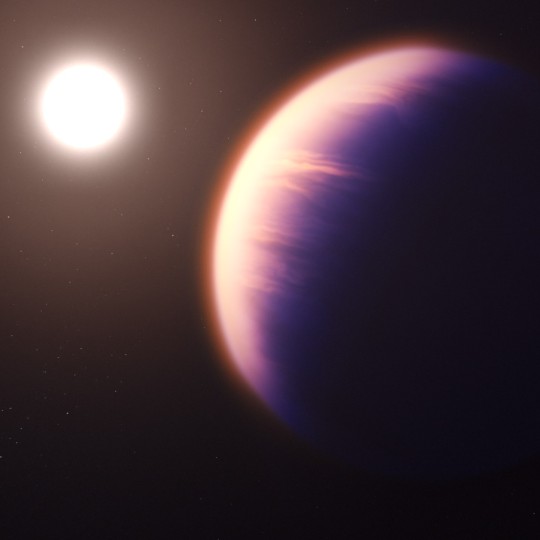
Image credit: NASA, ESA, CSA, and STScI/J. Olmsted
The first definitive proof that carbon dioxide exists in the atmosphere of a planet outside of the solar system was obtained by our James Webb Space Telescope.
The puffy planet, a gas giant 700 light-years from Earth circling a Sun-like star, sheds light on the planet's composition and development.
Based on what is known about the planet right now, this graphic depicts what the exoplanet WASP-39 b would look like.
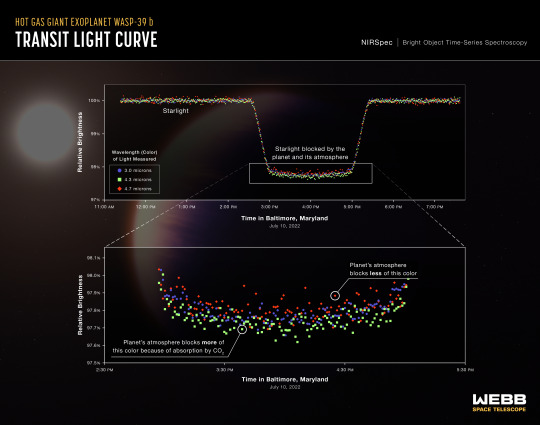
As the planet passed in front of the star on July 10, 2022, three distinct wavelengths (or colors) of light from the WASP-39 star system changed in brightness over time, as shown in a sequence of light curves from Webb's Near-Infrared Spectrograph (NIRSpec).
Credits: NASA, ESA, CSA, and L. Hustak are represented in the image; the JWST Transiting Exoplanet Community Early Release Science Team is represented in the science.
The atmosphere of a planet outside of our solar system contains the first conclusive evidence of carbon dioxide in its atmosphere, according to NASA's James Webb Space Telescope.
This observation of a gas giant planet 700 light-years from Earth circling a Sun-like star sheds light on the planet's composition and development.
The discovery, which has been approved for publication in Nature, provides proof that Webb could one day be able to identify and analyze carbon dioxide in the thinner atmospheres of smaller rocky planets.
With a diameter 1.3 times larger than Jupiter and a mass around one-quarter that of Jupiter, WASP-39 b is a hot gas giant.
Its high temperature contributes to some of its excessive puffiness (about 1,600 degrees Fahrenheit or 900 degrees Celsius).
WASP-39 b circles its star extremely closely, just approximately one-eighth the distance between the Sun and Mercury, and completes one round in little over four Earth days, in contrast to the colder, more compact gas giants in our solar system.
A planet transits its host star, or passes in front of it, causing a modest, periodic dimming of the star's brightness that led to the planet's discovery, which was announced in 2011.
The planet's atmosphere contains water vapour, sodium, and potassium, according to earlier studies from observatories like NASA's Hubble and Spitzer satellite telescopes. Carbon dioxide has now been verified to exist on this planet because to Webb's unrivalled infrared sensitivity. filtering the starlight. Researchers may take advantage of transiting planets like WASP-39 b, whose orbits we witness edge-on rather than from above, to study planetary atmospheres.
Some of the starlight is partially covered by the planet during a transit (resulting in the overall darkening), and some is transmitted through the atmosphere of the planet.
On July 10, 2022, Webb's Near-Infrared Spectrograph (NIRSpec) observed the transmission spectra of the hot gas giant exoplanet WASP-39 b and obtained the first definitive proof of carbon dioxide on an extrasolar planet.
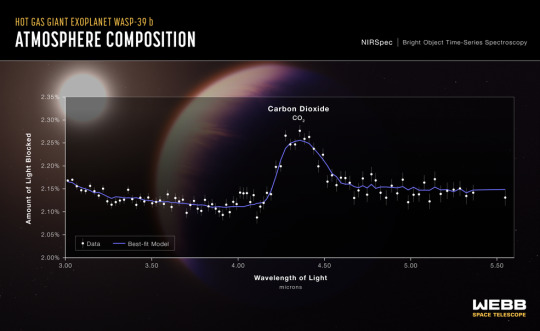
Additionally, this is the first comprehensive exoplanet transmission spectrum yet recorded, spanning wavelengths from 3 to 5.5 microns.
Researchers can identify the precise composition of an atmosphere by analyzing minute variations in brightness of the transmitted light over a variety of wavelengths because various gases absorb distinct combinations of colors.
WASP-39 b is a good target for transmission spectroscopy because of its inflated atmosphere and regular transits.
The first conclusive carbon dioxide detection. For their observations of WASP-39b, the study team employed Webb's Near-Infrared Spectrograph (NIRSpec). The first definitive, in-depth proof of carbon dioxide ever found on an extrasolar planet is shown by a little hill between 4.1 and 4.6 microns in the resultant spectrum of the exoplanet's atmosphere.
"Zafar Rustamkulov, a doctoral student at Johns Hopkins University and a member of the JWST Transiting Exoplanet Community Early Release Science team, who carried out this analysis, stated, "As soon as the data arrived on my screen, the huge carbon dioxide feature grabbed me. Crossing a crucial milestone in the study of exoplanets was a remarkable event.
No observatory has previously recorded such minute variations in brightness of so many different colors in an exoplanet transmission spectrum between the wavelengths of 3 and 5.5 microns.
For determining the abundances of gases like water and methane as well as carbon dioxide, which are believed to exist in a variety of exoplanet types, access to this section of the spectrum is essential.
Leading the research is Natalie Batalha of the University of California at Santa Cruz. "Detecting such a clear signal of carbon dioxide on WASP-39 b bodes well for the identification of atmospheres on smaller, terrestrial-sized planets," she stated.
It is crucial to comprehend a planet's atmosphere because it contains information about the planet's formation and evolution.
According to Mike Line of Arizona State University, another part of the study team, "Carbon dioxide molecules are sensitive tracers of the tale of planet creation."
We can tell how much solid and how much gaseous material was utilized to construct this gas giant planet by studying this carbon dioxide characteristic. JWST will do this measurement for a number of planets over the next ten years, shedding light on the specifics of planet formation and the peculiarities of our own solar system.
This NIRSpec prism observation of WASP-39 b is just a small portion of a broader inquiry that also includes observations of two additional transiting planets and studies of the planet utilising other Webb equipment.
The inquiry, which is a component of the Early Release Science initiative, was created with the goal of giving the Webb data to the exoplanet research community as soon as feasible.
According to co-investigator Vivien Parmentier from Oxford University, "the objective is to assess the Early Release Research findings fast and build open-source tools for the science community to utilize."
This allows for contributions from all across the globe and guarantees that the next decades of observations will provide the greatest research possible.
The paper's co-author from NASA's Ames Research Center, Natasha Batalha, adds, "Our Early Release Science effort is based on NASA's open science guiding principles, promoting an inclusive, transparent, and collaborative scientific process."
~ Jai Krishna Ponnappan
Find Jai on Twitter | LinkedIn | Instagram
Further Reading:
NASA’s Webb Detects Carbon Dioxide in Exoplanet Atmosphere
#Exoplanet#JWST#nasa james webb space telescope#astronomy#planets#life#alien life#space exploration#deep space#WASP-39#exoplanet wasp-39
4 notes
·
View notes
Photo

Identification of carbon dioxide in an exoplanet atmosphere
Carbon dioxide (CO2) is a key chemical species that is found in a wide range of planetary atmospheres. In the context of exoplanets, CO2 is an indicator of the metal enrichment (i.e., elements heavier than helium, also called "metallicity"), and thus formation processes of the primary atmospheres of hot gas giants. It is also one of the most promising species to detect in the secondary atmospheres of terrestrial exoplanets. Previous photometric measurements of transiting planets with the Spitzer Space Telescope have given hints of the presence of CO2 but have not yielded definitive detections due to the lack of unambiguous spectroscopic identification. Here we present the detection of CO2 in the atmosphere of the gas giant exoplanet WASP-39b from transmission spectroscopy observations obtained with JWST as part of the Early Release Science Program (ERS). The data used in this study span 3.0 - 5.5 μm in wavelength and show a prominent CO2 absorption feature at 4.3 μm (26σ significance). The overall spectrum is well matched by one-dimensional, 10x solar metallicity models that assume radiative-convective-thermochemical equilibrium and have moderate cloud opacity. These models predict that the atmosphere should have water, carbon monoxide, and hydrogen sulfide in addition to CO2, but little methane. Furthermore, we also tentatively detect a small absorption feature near 4.0 μm that is not reproduced by these models.
5 notes
·
View notes
Text
Apuntes para unas ‘Notículas cósmicas’
Dijo Feynman que nadie hacía poesía sobre ciencia. Yo digo que quizá porque la ciencia está dotada de un lenguaje tan poético que sería pleonasmo —y vulgar— ponerla en verso.*
Leo que el telescopio espacial Webb ha captado: cinco galaxias chocando entre sí como bolas de billar, una estrella moribunda rodeada de un océano de polvo, la estructura «gaseosa “ósea”» (¿gaseósea?) oculta de una galaxia muy lejana, astros en pañales en la nebulosa de Carina, dos galaxias —una elíptica y otra espiral— que parecen cogidas del brazo pero no lo están, y la infrarroja más nítida y profunda del universo remoto hasta la fecha, como si hubiera metido la mano al fondo del cajón, por donde se caen las cosas que impiden cerrarlo.
Nos ha dado la composición química más exhaustiva de un planeta lejano hasta hoy y espléndidas imágenes de la nebulosa de la Tarántula —a tantos años luz que si estuviera tan cerca como la de Orión, dicen, produciría sombras— y de la de Orión —a 1350 años luz; puede que ya no exista—, así como de la Rueda de Carro, una galaxia anular con un agujero negro en medio nacida de la colisión de otras dos, un dónut armado con un béiguel en brazos de Ixión.
Ha detectado dióxido de carbono en la atmósfera de un gigante gaseoso fuera de nuestro sistema solar —el exoplaneta WASP-39b— y un retrato infrarrojo de las auroras que se fraguan en los polos de Júpiter, fuego fatuo.
Nos ha descubierto cientos de galaxias, estrellas y cúmulos de polvo sideral. Y he recordado —por Sagan, por Solnit, por Mack— que las longitudes de onda más largas tienden al rojo y las más cortas, al azul, y que todo lo que vemos ya es pasado.
*Dejo para otro momento el aclarar que la poesía es ciencia y a la inversa.
2 notes
·
View notes
Photo

Wasp-39b and its parent star (artist’s impression) by Hubble Space Telescope / ESA
113 notes
·
View notes
Text
NASA telescopes discover water-rich exoplanet atmosphere
NASA telescopes discover water-rich exoplanet atmosphere
An artist’s depiction of WASP-39b and its parent star. They are located some 700 light-years from Earth. Image Credit: NASA / ESA / G. Bacon and A. Feild / H. Wakeford
Scientists using NASA’s Hubble and Spitzer space telescopes in concert have examined the elemental composition of a distant exoplanet’s atmosphere in the highest detail yet. The planet, designated WASP-39b, is about the same mass…
View On WordPress
0 notes
Text
Ученые нашли планету WASP-39b, которая переполнена водой
Изучение далеки�� планет позволяет ученым понять те процессы, в которых образуются эти космические... Читать дальше »
0 notes
Link
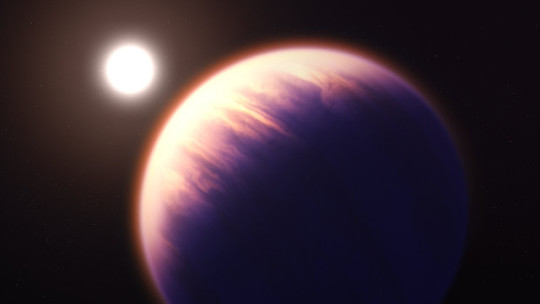
Cinque articoli, tre dei quali accettati per la pubblicazione sulla rivista "Nature" e due ancora in fase di peer review, riportano vari aspetti di uno studio sull'esopianeta WASP-39b. Molti ricercatori hanno partecipato in diversi modi all'esame di osservazioni condotte con il telescopio spaziale James Webb concentrate in particolare sull'atmosfera di questo pianeta caldissimo. I vari strumenti di Webb hanno permesso di rilevare una serie di sostanze nell'atmosfera di WASP-39b come monossido di carbonio, sodio e potassio. Per la prima volta anidride solforosa è stata rilevata nell'atmosfera di un esopianeta e indicano che sono in atto reazioni fotochimiche.
1 note
·
View note
Text
youtube
Last month, five papers were published regarding the analysis of exoplanet WASP-39b's atmospheric composition. This morning, I had the pleasure of interviewing four of the five lead authors, all of whom are grad students or postdocs. I hope you enjoy our conversation as much as I did!
0 notes
Text
Solar System 10 Things to Know: Planetary Atmospheres
Every time you take a breath of fresh air, it’s easy to forget you can safely do so because of Earth’s atmosphere. Life on Earth could not exist without that protective cover that keeps us warm, allows us to breathe and protects us from harmful radiation—among other things.
What makes Earth’s atmosphere special, and how do other planets’ atmospheres compare? Here are 10 tidbits:
1. On Earth, we live in the troposphere, the closest atmospheric layer to Earth’s surface. “Tropos” means “change,” and the name reflects our constantly changing weather and mixture of gases.
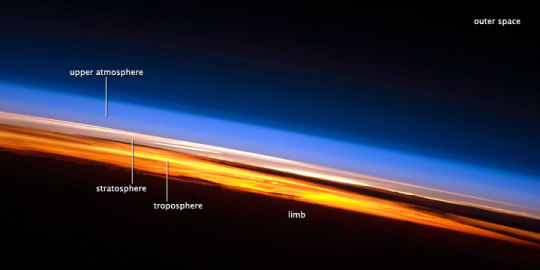
It’s 5 to 9 miles (8 to 14 kilometers) thick, depending on where you are on Earth, and it’s the densest layer of atmosphere. When we breathe, we’re taking in an air mixture of about 78 percent nitrogen, 21 percent oxygen and 1 percent argon, water vapor and carbon dioxide. More on Earth’s atmosphere›

2. Mars has a very thin atmosphere, nearly all carbon dioxide. Because of the Red Planet’s low atmospheric pressure, and with little methane or water vapor to reinforce the weak greenhouse effect (warming that results when the atmosphere traps heat radiating from the planet toward space), Mars’ surface remains quite cold, the average surface temperature being about -82 degrees Fahrenheit (minus 63 degrees Celsius). More on the greenhouse effect›

3. Venus’ atmosphere, like Mars’, is nearly all carbon dioxide. However, Venus has about 154,000 times more carbon dioxide in its atmosphere than Earth (and about 19,000 times more than Mars does), producing a runaway greenhouse effect and a surface temperature hot enough to melt lead. A runaway greenhouse effect is when a planet’s atmosphere and surface temperature keep increasing until the surface gets so hot that its oceans boil away. More on the greenhouse effect›

4. Jupiter likely has three distinct cloud layers (composed of ammonia, ammonium hydrosulfide and water) in its "skies" that, taken together, span an altitude range of about 44 miles (71 kilometers). The planet's fast rotation—spinning once every 10 hours—creates strong jet streams, separating its clouds into dark belts and bright zones wrapping around the circumference of the planet. More on Jupiter›
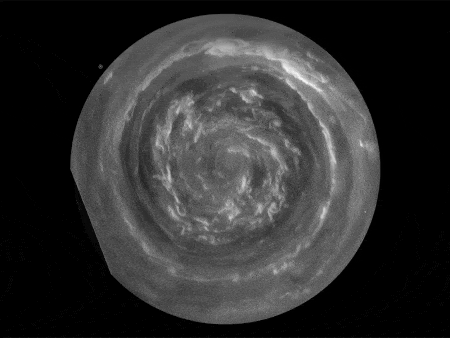
5. Saturn’s atmosphere—where our Cassini spacecraft ended its 13 extraordinary years of exploration of the planet—has a few unusual features. Its winds are among the fastest in the solar system, reaching speeds of 1,118 miles (1,800 kilometers) per hour. Saturn may be the only planet in our solar system with a warm polar vortex (a mass of swirling atmospheric gas around the pole) at both the North and South poles. Also, the vortices have “eye-wall clouds,” making them hurricane-like systems like those on Earth.
Another uniquely striking feature is a hexagon-shaped jet streamencircling the North Pole. In addition, about every 20 to 30 Earth years, Saturn hosts a megastorm (a great storm that can last many months). More on Saturn›

6. Uranus gets its signature blue-green color from the cold methane gas in its atmosphere and a lack of high clouds. The planet’s minimum troposphere temperature is 49 Kelvin (minus 224.2 degrees Celsius), making it even colder than Neptune in some places. Its winds move backward at the equator, blowing against the planet’s rotation. Closer to the poles, winds shift forward and flow with the planet’s rotation. More on Uranus›
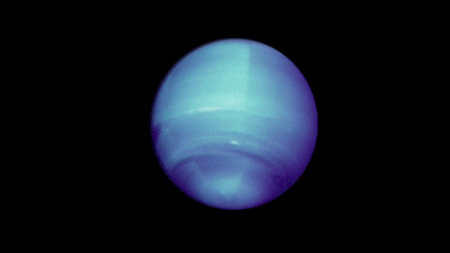
7. Neptune is the windiest planet in our solar system. Despite its great distance and low energy input from the Sun, wind speeds at Neptune surpass 1,200 miles per hour (2,000 kilometers per hour), making them three times stronger than Jupiter’s and nine times stronger than Earth’s. Even Earth's most powerful winds hit only about 250 miles per hour (400 kilometers per hour). Also, Neptune’s atmosphere is blue for the very same reasons as Uranus’ atmosphere. More on Neptune›

8. WASP-39b, a hot, bloated, Saturn-like exoplanet (planet outside of our solar system) some 700 light-years away, apparently has a lot of water in its atmosphere. In fact, scientists estimate that it has about three times as much water as Saturn does. More on this exoplanet›

9. A weather forecast on “hot Jupiters”—blistering, Jupiter-like exoplanets that orbit very close to their stars—might mention cloudy nights and sunny days, with highs of 2,400 degrees Fahrenheit (about 1,300 degrees Celsius, or 1,600 Kelvin). Their cloud composition depends on their temperature, and studies suggest that the clouds are unevenly distributed. More on these exoplanets›
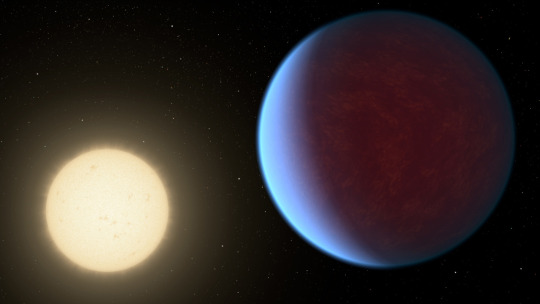
10. 55 Cancri e, a “super Earth” exoplanet (a planet outside of our solar system with a diameter between Earth’s and Neptune’s) that may be covered in lava, likely has an atmosphere containing nitrogen, water and even oxygen–molecules found in our atmosphere–but with much higher temperatures throughout. Orbiting so close to its host star, the planet could not maintain liquid water and likely would not be able to support life. More on this exoplanet›
Read the full version of this week’s Solar System 10 Things to Know HERE.
Make sure to follow us on Tumblr for your regular dose of space: http://nasa.tumblr.com.
4K notes
·
View notes
Photo
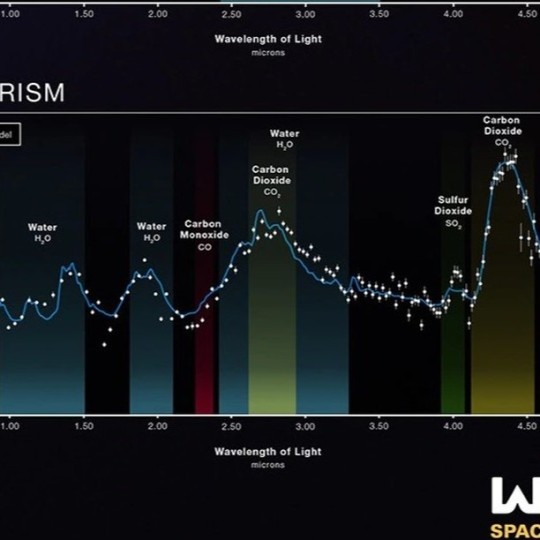
WEBB E' UTILIZZATO ANCHE PER RILEVARE I GAS DELL'UNIVERSO. http://www.impresaoggi.com/it2/2408-con_le_immagini_del_webb_ci_si_avvicina_allalba_delluniverso/ Per la prima volta dell'anidride carbonica è stata chiaramente rilevata nell'atmosfera di un esopianeta. Alla scoperta hanno partecipato anche ricercatori dell'Università di Ginevra e di quella di Berna. "Appena abbiamo visto i dati era chiaro che si trattasse di una scoperta spettacolare", ha detto Dominique Petit dit de la Roche, scienziata dell'UNIGE e co-autrice dello studio. "È la prima volta che il CO2 viene individuato su un pianeta fuori dal sistema solare", aggiunge l'esperta. L'esopianeta WASP-39b è un gigante gassoso caldo che transita davanti alla propria stella. Quando un pianeta transita direttamente davanti alla sua stella, una parte della luce di essa passa attraverso il corpo celeste prima di raggiungere il telescopio. "L'atmosfera in quel momento filtra certi colori più di altri", spiega Monika Lendl, a sua volta professoressa all'UNIGE e coautrice dello studio. Utilizzando il telescopio James Webb per decomporre la luce nei suoi colori, si possono identificare le "impronte digitali" caratteristiche dei diversi gas che determinano la composizione dell'atmosfera, illustra Lendl. Il team di ricerca è così riuscito a rilevare l'"impronta digitale" dell'anidride carbonica nella luce che attraversa l'atmosfera di WASP-39b. Scoprire queste informazioni riguardo a un pianeta permette di capirne meglio l'origine e la sua evoluzione. Individuando senza ombra di dubbio la presenza di CO2 nell'atmosfera di esopianeti lontani è stato quindi compiuto un passo fondamentale nella ricerca di mondi adatti alla vita. Sono stati rilevati, H2O, CO2, CO, K, Na, SO2 e tracce. https://www.instagram.com/p/Cm6fwG-onQd/?igshid=NGJjMDIxMWI=
0 notes